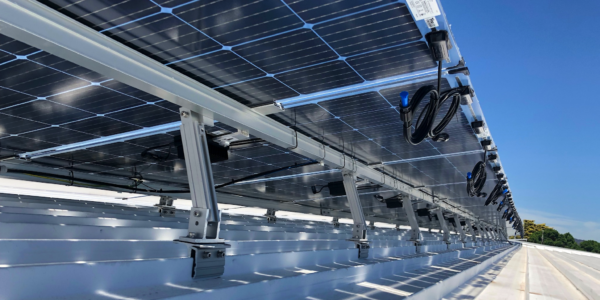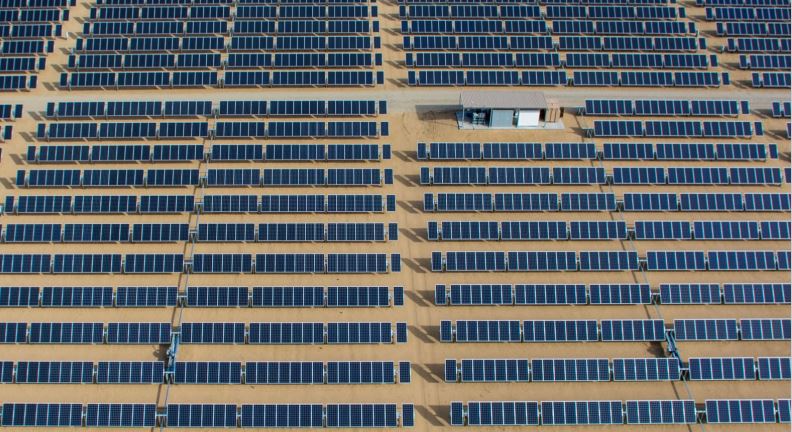A report released by Spanish software company RatedPower suggests digitalization has the potential to transform the entire energy supply chain with solar PV set to lead a renewable energy charge to record levels in 2021.
The report, released on Thursday, shows there was an unexpected surge in renewable energy growth globally in 2020 with wind and solar power generation rising to record levels. This expansion is forecast to continue in 2021 with the International Energy Agency (IEA) projecting a 10% increase in renewable capacity additions to almost 218 GW globally.
Australia, which the report ranks among the top five nations with the most potential for renewable energy growth, is among those countries set to contribute to this surge.
After a record 7 GW of new renewable energy capacity was installed in 2020, the Clean Energy Regulator (CER) confirmed earlier this month Australia is on track for another record year, forecasting that between 3 GW and 4 GW of rooftop solar PV will be installed in 2021 while the rollout of large-scale solar PV projects is also expected to continue at pace.
RatedPower CEO Andrea Barber said digitilization and innovation would be crucial for the ongoing expansion of the renewable energy industry.
“Digitalization has the power to transform the entire energy supply chain, from generation to transport, distribution and consumption,” she said.
“Digital technologies can advance the next stage of development by integrating renewables into energy systems in a way that provides a flexible demand-side response, increasing efficiency and sustainability.”
RatedPower surveyed more than 100 industry representatives from around the globe and an overwhelming 86% agreed with Barber, saying digitalization will play a substantial role in the continued development of renewables, enabling more efficient and flexible projects that generate a higher return on investment.

Image: Vicinity Centres
The report also highlights the trend towards maximising efficiency of renewable installations and keeping down costs with solutions such as bifacial panels – which research shows were the cheapest option for 93.1% of global solar sites on a levelized cost basis – thin-film PV, and AI tools to increase visibility into the operation.
Battery storage is also expected to play a key role into the future, affording grid operators increased flexibility in the distribution of power generated by solar and wind sites.
“Storage is the key to using renewable energy more effectively, minimizing carbon emissions and ensuring grid stabilization,” Barber said.
“One of the challenges in the widespread adoption of wind and solar power has been that generation is dependent on weather conditions. Battery storage gives grid operators another tool to balance peaks in electricity generation and consumption, storing power for when it is most needed.”
The report indicates solar PV will lead the way for the renewable energy sector with 80% of respondents expecting a record 130 GW of new capacity to be installed globally this year.
Green hydrogen was also identified as a high-growth area with projects expected to more than double in 2021. Respondents also said that hydrogen (44%) has the potential to rival wind energy (43%).

Image: Posco
“Hydrogen can bring the renewable sector a step further towards a greener future and revolutionize the transportation industry,” Barber said.
“Green hydrogen produced using renewables has the potential to complement batteries in providing fuel for zero-emission means of transport, especially in ‘hard-to-decarbonise’ such as trucks, aviation, shipping, and other energy-intensive ones. It can also displace fossil fuels to meet the energy needs of sectors like manufacturing, shipping and construction.”
While the report points to a bright future for the renewable energy sector, those who took part in the survey did warn the industry faces some major challenges with the lack of clear government policy chief among them.
Half of all who took part in the survey identified government policy as the biggest challenge confronting the industry while a lack of incentives and well-targeted public investments are also of concern.
The industry’s long-term sustainability is also an issue with 37% of respondents highlighting the lack of infrastructure for recycling equipment solar panels and wind turbines as a real concern.
Grid infrastructure, transmission capacity, and energy storage were also areas of concern and Barber said they would need to be addressed moving forward.
“If we are to mitigate the impact of climate change, renewables must become the predominant source of electricity supply around the world,” she said.
“Even without incentives for green infrastructure development, renewable technologies have progressed to become competitive enough to displace fossil fuels, accelerating the energy transition in new ways. I’m certain that the year ahead will be an exciting period of change for the industry. A change led by what I consider to be some of the most promising trends: digitalization, energy storage, new technologies and the hydrogen revolution.”
This content is protected by copyright and may not be reused. If you want to cooperate with us and would like to reuse some of our content, please contact: editors@pv-magazine.com.









1 comment
By submitting this form you agree to pv magazine using your data for the purposes of publishing your comment.
Your personal data will only be disclosed or otherwise transmitted to third parties for the purposes of spam filtering or if this is necessary for technical maintenance of the website. Any other transfer to third parties will not take place unless this is justified on the basis of applicable data protection regulations or if pv magazine is legally obliged to do so.
You may revoke this consent at any time with effect for the future, in which case your personal data will be deleted immediately. Otherwise, your data will be deleted if pv magazine has processed your request or the purpose of data storage is fulfilled.
Further information on data privacy can be found in our Data Protection Policy.